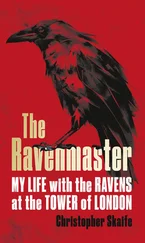As late as 1718 (just as the inoculation against smallpox was being introduced to England and the English mathematician Brook Taylor was making refinements to the calculus), we find the madness of the witch hunt still a potent social force. Charles Mackay relates an incident in Caithness (northeast Scotland):
A silly fellow, named William Montgomery, a carpenter, had a mortal antipathy to cats; and somehow or other these animals generally chose his backyard as the scene of their catterwaulings. He puzzled his brains for a long time to know why he, above all his neighbors, should be so pestered. At last he came to the sage conclusion that his tormentors were no cats, but witches. In this opinion he was supported by his maid-servant, who swore a round oath that she had often heard the aforesaid cats talking together in human voices. The next time the unlucky tabbies assembled in his backyard, the valiant carpenter was on the alert. Arming himself with an axe, a dirk, and a broadsword, he rushed out among them. One of them he wounded in the back, a second in the hip, and the leg of a third he maimed with his axe; but he could not capture any of them. A few days afterwards, two old women of the parish died; and it was said, that when their bodies were laid out, there appeared upon the back of one the mark as of a recent wound, and a similar scar upon the hip of the other. The carpenter and his maid were convinced that they were the very cats, and the whole county repeated the same story. Every one was upon the look-out for proofs corroborative; a very remarkable one was soon discovered. Nancy Gilbert, a wretched old creature upwards of seventy years of age, was found in bed with her leg broken. As she was ugly enough for a witch, it was asserted that she also was one of the cats that had fared so ill at the hands of the carpenter. The latter, when informed of the popular suspicion, asserted that he distinctly remembered to have struck one of the cats a blow with the back of his broadsword, which ought to have broken her leg. Nancy was immediately dragged from her bed and thrown into prison. Before she was put to the torture, she explained in a very natural and intelligible manner how she had broken her limb; but this account did not give satisfaction. The professional persuasions of the torturer made her tell a different tale, and she confessed that she was indeed a witch, and had been wounded by Montgomery on the night stated; that the two old women recently deceased were witches also, besides about a score of others whom she named. The poor creature suffered so much by the removal from her own home, and the tortures inflicted upon her, that she died the next day in prison.
Apart from observing, yet again, the astonishing consequences of certain beliefs, we should take note of the reasonable way these witch-hunters attempted to confirm their suspicions. They looked for correlations that held apparent significance: not any old woman would do; they needed one who had suffered a wound similar to the one inflicted upon the cat. Once you accept the premise that old women can shape-shift into cats and back again, the rest is practically science.
The church did not officially condemn the use of torture until the bull of Pope Pius VII in 1816.
Anti-Semitism is as integral to church doctrine as the flying buttress is to a Gothic cathedral, and this terrible truth has been published in Jewish blood since the first centuries of the common era. Like that of the Inquisition, the history of anti-Semitism can scarcely be given sufficient treatment in the context of this book. I raise the subject, however briefly, because the irrational hatred of Jews has produced a spectrum of effects that have been most acutely felt in our own time. Anti-Semitism is intrinsic to both Christianity and Islam; both traditions consider the Jews to be bunglers of God’s initial revelation. Christians generally also believe that the Jews murdered Christ, and their continued existence as Jews constitutes a perverse denial of his status as the Messiah. Whatever the context, the hatred of Jews remains a product of faith: Christian, Muslim, as well as Jewish.
Contemporary Muslim anti-Semitism is heavily indebted to its Christian counterpart. The Protocols of the Elders of Zion, a Russian anti-Semitic forgery that is the source of most conspiracy theories relating to the Jews, is now considered an authoritative text in the Arab-speaking world. A recent contribution to Al-Akhbar, one of Cairo’s mainstream newspapers, suggests that the problem of Muslim anti-Semitism is now deeper than any handshake in the White House Rose Garden can remedy: “Thanks to Hitler, of blessed memory, who on behalf of the Palestinians took revenge in advance, against the most vile criminals on the face of the Earth…. Although we do have a complaint against him, for his revenge was not enough.” This is from moderate Cairo, where Muslims drink alcohol, go to the movies, and watch belly dancing—and where the government actively represses fundamentalism. Clearly, hatred of the Jews is white-hot in the Muslim world.
The gravity of Jewish suffering over the ages, culminating in the Holocaust, makes it almost impossible to entertain any suggestion that Jews might have brought their troubles upon themselves. This is, however, in a rather narrow sense, the truth. Prior to the rise of the church, Jews became the objects of suspicion and occasional persecution for their refusal to assimilate, for the insularity and professed superiority of their religious culture—that is, for the content of their own unreasonable, sectarian beliefs. The dogma of a “chosen people,” while at least implicit in most faiths, achieved a stridence in Judaism that was unknown in the ancient world. Among cultures that worshiped a plurality of Gods, the later monotheism of the Jews proved indigestible. And while their explicit demonization as a people required the mad work of the Christian church, the ideology of Judaism remains a lightning rod for intolerance to this day. As a system of beliefs, it appears among the least suited to survive in a theological state of nature. Christianity and Islam both acknowledge the sanctity of the Old Testament and offer easy conversion to their faiths. Islam honors Abraham, Moses, and Jesus as forerunners of Muhammad. Hinduism embraces almost anything in sight with its manifold arms (many Hindus, for instance, consider Jesus an avatar of Vishnu). Judaism alone finds itself surrounded by unmitigated errors. It seems little wonder, therefore, that it has drawn so much sectarian fire. Jews, insofar as they are religious, believe that they are bearers of a unique covenant with God. As a consequence, they have spent the last two thousand years collaborating with those who see them as different by seeing themselves as irretrievably so. Judaism is as intrinsically divisive, as ridiculous in its literalism, and as at odds with the civilizing insights of modernity as any other religion. Jewish settlers, by exercising their “freedom of belief” on contested land, are now one of the principal obstacles to peace in the Middle East. They will be a direct cause of war between Islam and the West should one ever erupt over the Israeli-Palestinian conflict.
The problem for first-century Christians was simple: they belonged to a sect of Jews that had recognized Jesus as the messiah (Greek christos), while the majority of their coreligionists had not. Jesus was a Jew, of course, and his mother a Jewess. His apostles, to the last man, were also Jews. There is no evidence whatsoever, apart from the tendentious writings of the later church, that Jesus ever conceived of himself as anything other than a Jew among Jews, seeking the fulfillment of Judaism—and, likely, the return of Jewish sovereignty in a Roman world. As many authors have observed, the numerous strands of Hebrew prophecy that were made to coincide with Jesus’s ministry betray the apologetics, and often poor scholarship, of the gospel writers.
Читать дальше












